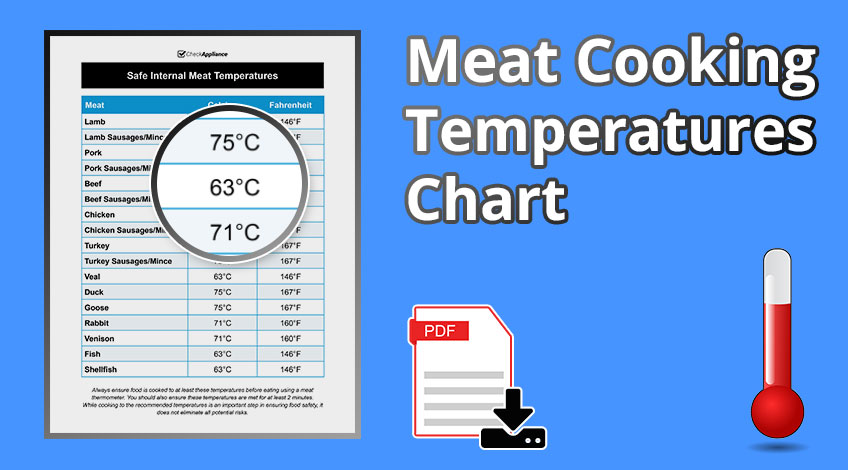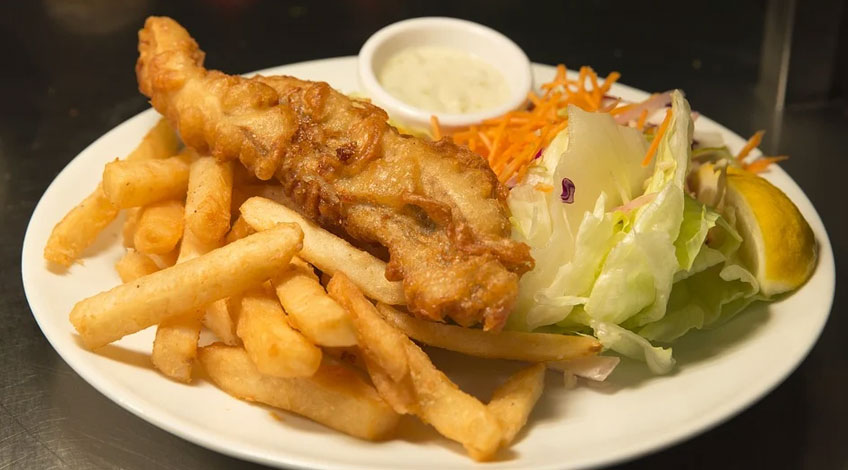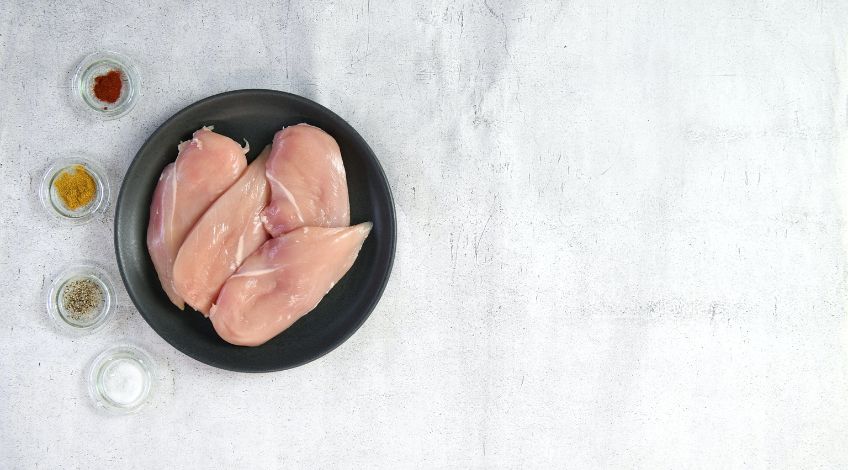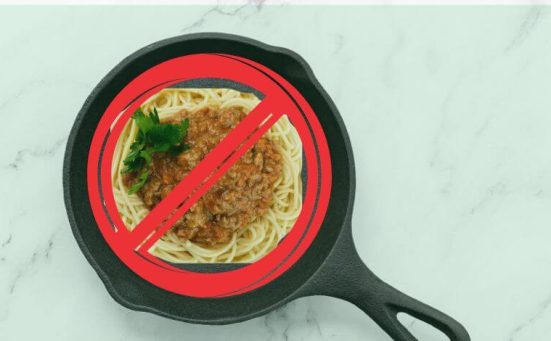
Meat Cooking Temperatures Chart (safe internal UK temps pdf)
Looking for a printable meat cooking temperatures chart that shows you the safe internal temps you need to get meat to in the UK? You’ve found it!
Click on the Download PDF button below, grab the temperatures chart and never worry about under cooking meat again!

Do Internal Meat Temperatures Really Matter?
Cooking meat to a safe internal temperature is vital to safeguard against foodborne illnesses and ensure delicious, wholesome meals.
Whether you’re preparing beef, poultry, seafood, or other foods, it’s crucial to understand the appropriate internal temperatures to eliminate the harmful germs that are responsible for food poisoning.
Why You Need To Use A Food Thermometer
The use of a food thermometer is very important when determining the internal temperature of cooked meat as it allows you to accurately measure whether the meat has reached the recommended safe minimum temperature. This helps ensure that any potential pathogens are effectively eradicated.
By using a good food thermometer, you can take the guesswork out of cooking – providing you with confidence in serving meals that are both delicious and safe to consume.
Download Your Printable PDF Now
Simply click on the “Download PDF” button below, and you’ll have a handy reference to keep in your kitchen.
Frequently Asked Questions
We are now going to run through some of the most frequently asked questions when it comes to safe internal temperatures of meat.
What Is The Safe Internal Temperature Of Fish?

To ensure fish is safe to eat, cook it to an internal temperature of at least 63°C (145°F). Confirm with a food thermometer inserted into the thickest part of the fish and allow a few minutes of rest after reaching this temperature.
What Is The Safe Internal Temperature Of Venison?
For your venison to be safe to eat, cook it until it reaches an internal temperature of 71°C (160°F). Verify this with a food thermometer inserted into the thickest part of the meat.
After reaching this temperature, let the venison rest for a few minutes prior to serving.
What Is The Safe Internal Temperature Of Rabbit?
To make sure rabbit is safe to eat, ensure it reaches a recommended internal temperature of 71°C (160°F). Use a food thermometer to check the temperature at the thickest part of the meat. Once it reaches 71°C, give it a resting period of 2 minutes before serving.
What Is The Safe Internal Temperature Of Goose?
For goose to be safe to consume, it should reach an internal temperature of 75°C (167°F). Confirm the temperature with a food thermometer at the thickest part of the meat, avoiding contact with bones.
Allow a few minutes of rest after reaching 75°C before eating.
What Is The Safe Internal Temperature Of Duck?
To ensure duck is safe to eat, cook it until it reaches an internal temperature of 75°C (167°F). Use a food thermometer to check the temperature at the thickest part of the meat, avoiding contact with bones. After reaching the desired temperature, let the duck rest for 2 minutes before serving.
What Is The Safe Internal Temperature Of Veal?
To safely consume veal, cook it to an internal temperature of at least 63°C (146°F). Use a food thermometer to verify the temperature at the thickest part of the meat. Once it reaches the desired temperature, ensure it is maintained for a sufficient duration.
What Is The Safe Internal Temperature Of Turkey?
The safe internal cooking temperature for turkey is 75°C (167°F). This is also the same minimum internal temperature needed for turkey sausages and turkey mince.
Use a food thermometer to check the temperature at the thickest part of the meat.
What Is The Safe Internal Temperature Of Chicken?

The safe internal temperature for chicken is 75°C (167°F). This is also the same minimum internal temperature needed for chicken mince and chicken sausages.
You should use a food thermometer to check the temperature at the thickest part of the chicken to ensure accuracy and leave the chicken to rest for 2 minutes after reaching 75°C.
What Is The Safe Internal Temperature Of Beef?

The safe internal cooking temperature for beef is 63°C (145°F). To ensure beef is safe to eat, cook it until it reaches this internal temperature and use a food thermometer to check the temperature at the thickest part of the meat.
However, for beef mince, ensure the internal temperature reaches at least 71°C (160°F).
What Is The Safe Internal Temperature Of Pork?
Pork’s internal temperature needs to reach a minimum of 75°C (167°F) to ensure it’s safe to eat. This minimum temperature is also the same for pork mince and pork sausages too.
What Is The Safe Internal Temperature Of Lamb?
If you’re cooking lamb, ensure the internal temperature reaches at least 63°C (146°F).
If it’s lamb mince or lamb sausages, make sure the temperature reaches at least 71°C (160°F).
Have A Question?
Have a type of meat and not sure what internal temperature it needs to reach to be safely consumed? Ask away in the comments section below!
Also, follow us on Pinterest ...



